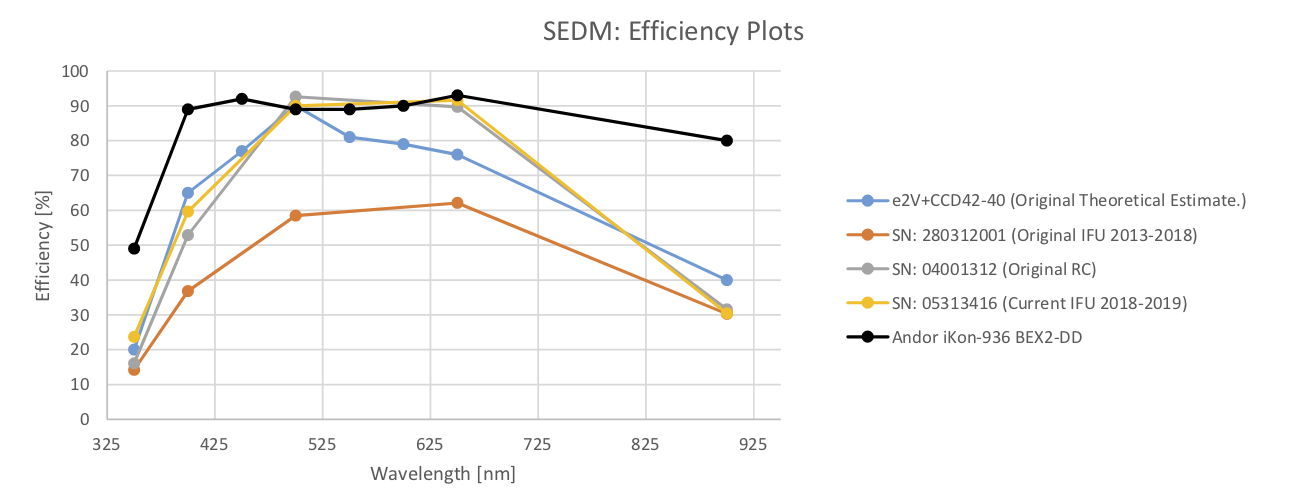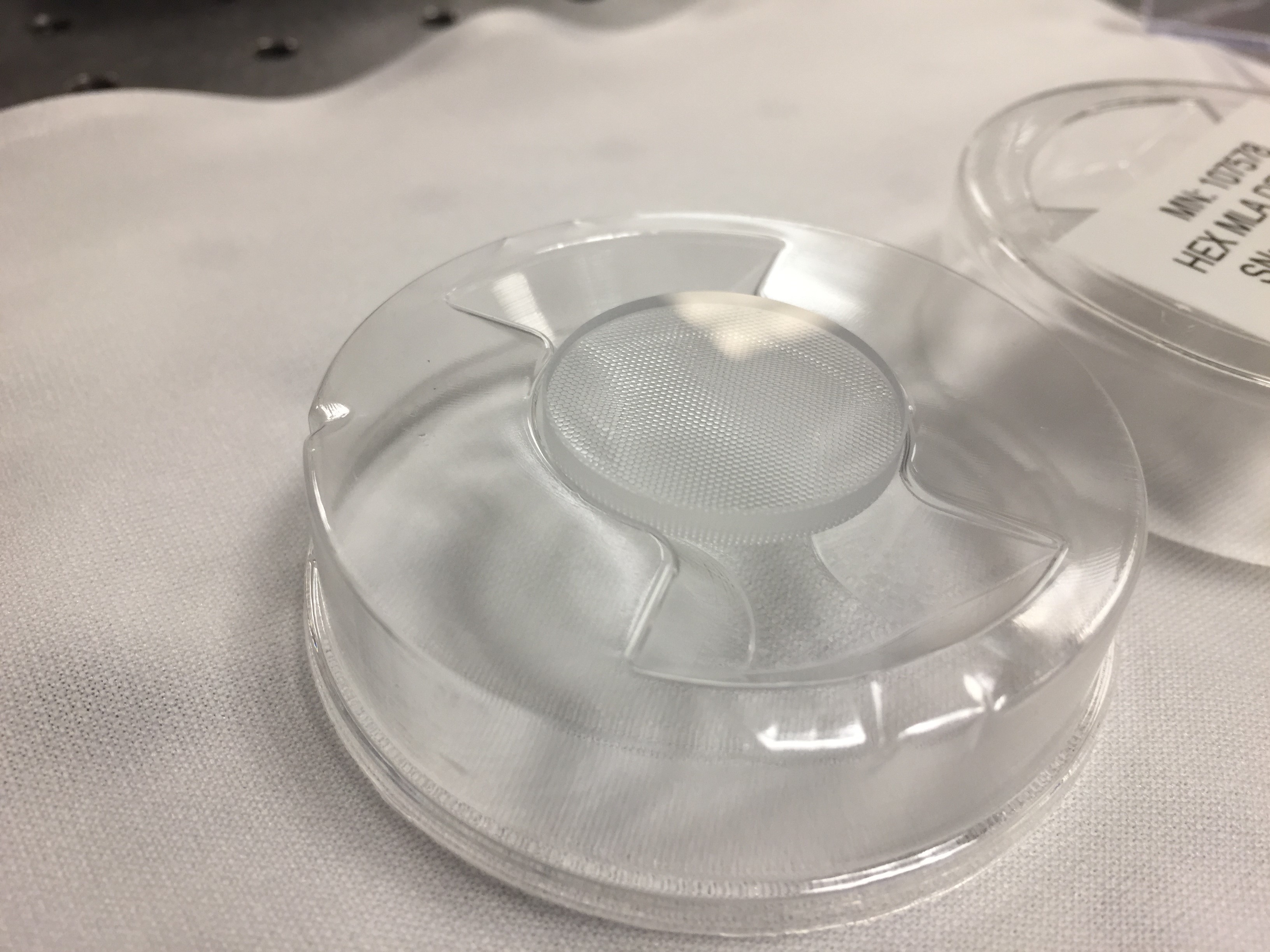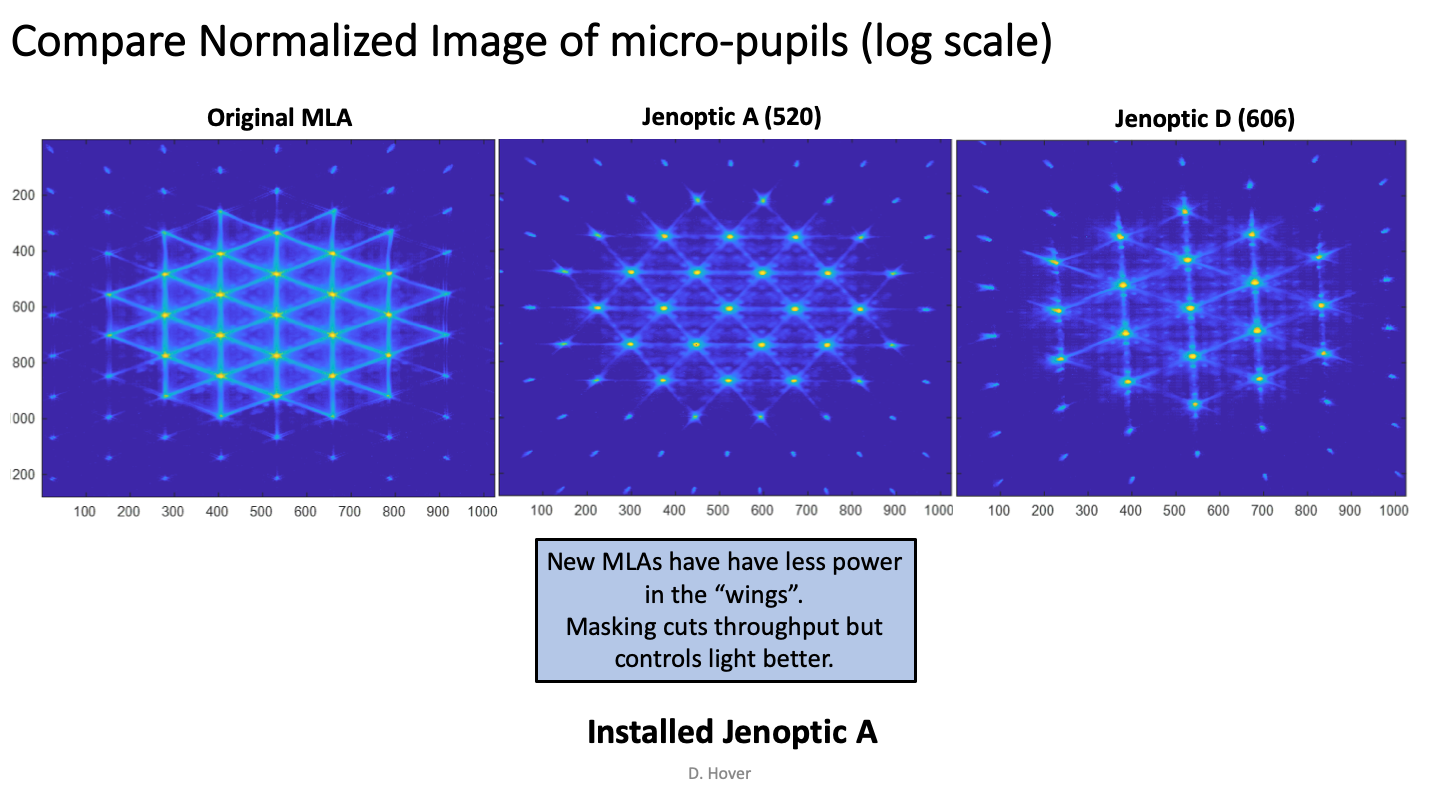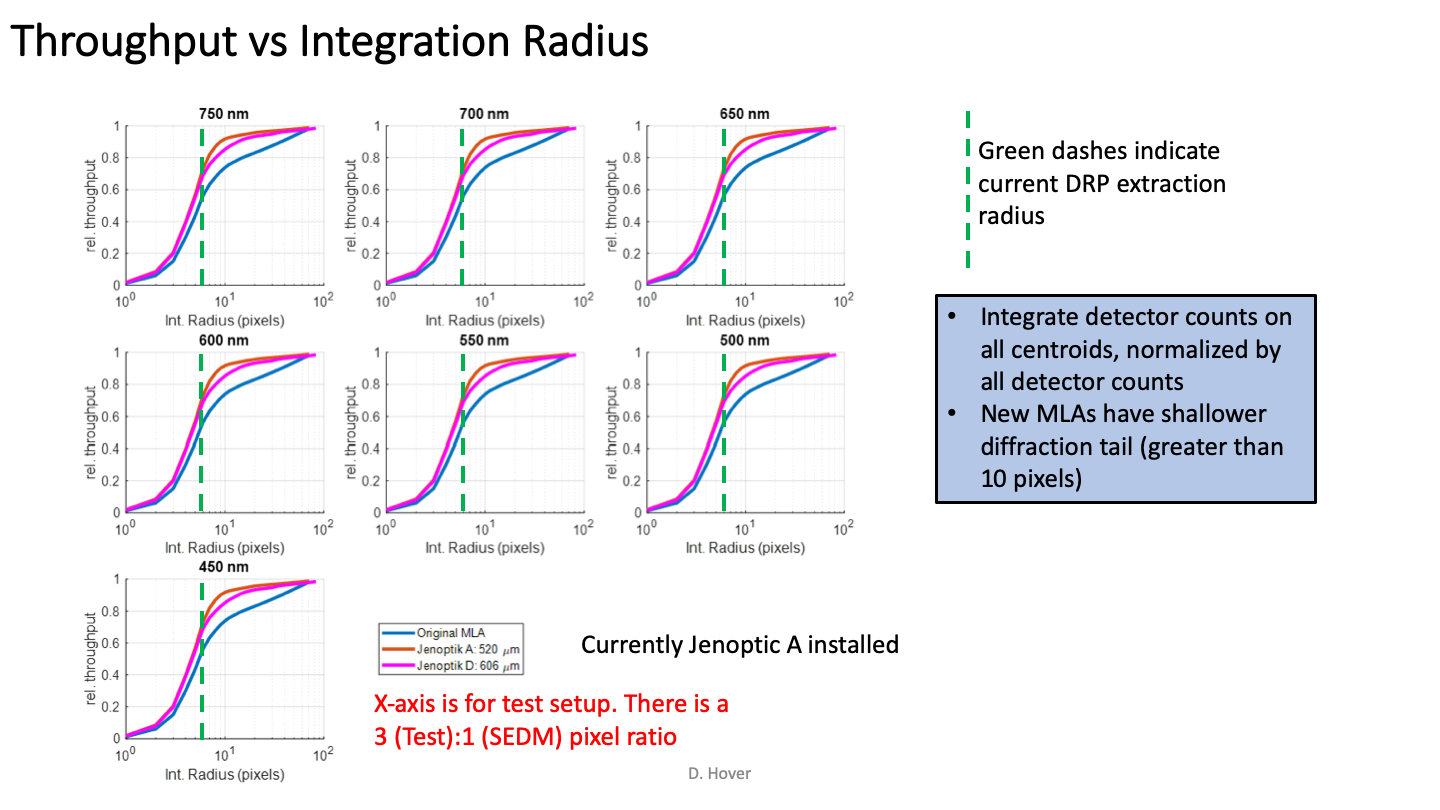6. Hardware¶
Here we document the updates to the SEDM hardware. Only new components are listed here. For the original components see the section Original Components.
6.1. Princeton Pixis CCDs¶
The CCDs ordered from Princeton have very different QE specifications. From the beginning up until 2018/05/08, the lowest QE CCD was primarily used for the IFU. This is also the CCD that exhibits the stripes mentioned in the timeline. We installed a new CCD from Princeton on 2016/07/07 in the RC spot where it stayed until 2018/01/11. This new CCD has the highest QE and was installed in the IFU position on 2018/05/08. This figure shows the QE values from Princeton for each of the three CCDs that were ordered, along with an e2V theorectical curve and compares them with an Andor Ikon-936 with a BEX2-DD coating.

Figure 1. QE values from Princeton Instruments for the SEDM CCDs and from Andor for the Ikon-936.¶
6.2. Optics¶
6.2.1. Jenoptik Micro-Lens Array¶
Problems with the original MLA made by AMS were detected when the spare MLA was examined under a microscope revealing a mis-alignment between the bi-convex faces of the MLA. A new design was originated by Jason Fucik that was plano-convex, thereby eliminating any alignment issues. He contracted with Jenoptik to manufacture this new design with two pitches for the lenslets: 520 microns and 606 microns. The 520 micron pitch MLA was found to have the lowest scattering and was installed in SEDM on 2018/06/19.

Figure 2. Jenoptik PN: 107578 installed in SEDM on 2018/06/19.¶
Jenoptik PN 107578 (520 micron pitch) drawing:
Jenoptik PN 107597 (606 micron pitch) drawing:
6.2.1.1. Performance¶
While the gross throughput only went up by 25%, the lower scattering provided a major improvement in performance on-sky. The combination of the lower scattering and the improved QE of the new IFU CCD has reduced our exposure times by 20%!

Figure 3. Qualitative comparison of scattering between the three MLAs.¶

Figure 4. Quantitative comparison of scattering and the basis for choosing the 520 micron pitch MLA.¶
6.2.2. Expander¶
6.2.3. Lenslet¶
6.2.4. Collimator¶
6.2.5. Disperser¶
6.2.6. Camera¶
6.3. Mechanics¶
6.3.1. IFU Focus Stage¶
6.4. Focus¶
6.4.1. Strategy¶
6.5. Electronics¶
6.5.1. Focus Stage Controller¶
6.5.2. Shutters¶
Uniblitz parts are used for both shutters. These include the two shutters for the IFU and RC channels, the controllers, and a mounting ring. This is the invoice for the order of these parts:
6.5.2.1. Shutter Controllers (2)¶
Uniblitz D880C shutter controller.
Uniblitz PN D880C specsheet:
6.5.2.2. IFU Shutter¶
Uniblitz 25mm, housed shutter.
Uniblitz PN CS25E3T0 specsheet:
6.5.2.3. RCam Shutter¶
Uniblitz 45mm, housed shutter.
Uniblitz PN CS45E3T0 specsheet:
6.5.2.4. RCam Shutter Mounting Ring¶
Uniblitz CS45 mounting ring.
Uniblitz PN 101 specsheet:
SPECSHEETS/uniblitz-101-datasheet.pdf
Last updated on 17 May 2023